
David Millians
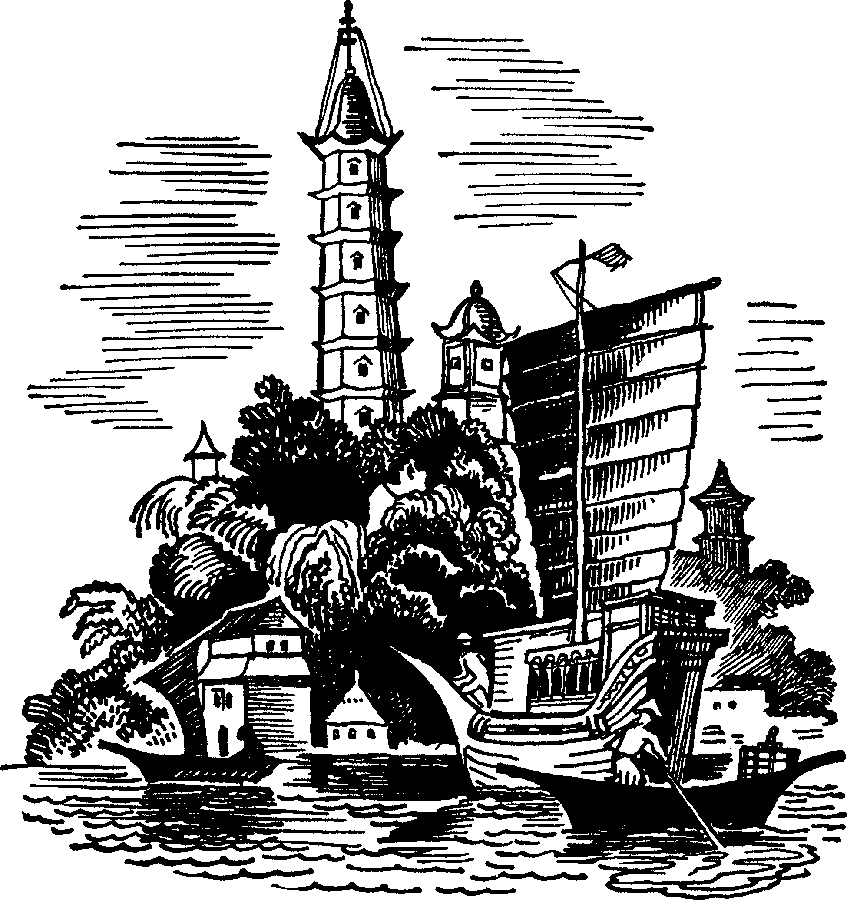 Kralori craft range along all of its rivers and throughout the Suam Chow and nearby waterways and islands in the Sea of Kahar. A few larger ships travel even farther, reaching all of the major ports of Glorantha. Most, though, are small boats, crewed by a few fisherman, sometimes home to an entire family. The coasts of Kralorela host countless boat towns, many of which migrate with the seasons and their livelihoods, much to the chagrin of local magistrates. Sha Ming and Lur Nop, both major cities in the south, are famous for their “boat cities,” flourishing communities on their shores. Both the government and the military make use of boats, most famously in the empire’s intricate system of ferries and the impressive war barges. Smugglers and poachers are common too.
Kralori craft range along all of its rivers and throughout the Suam Chow and nearby waterways and islands in the Sea of Kahar. A few larger ships travel even farther, reaching all of the major ports of Glorantha. Most, though, are small boats, crewed by a few fisherman, sometimes home to an entire family. The coasts of Kralorela host countless boat towns, many of which migrate with the seasons and their livelihoods, much to the chagrin of local magistrates. Sha Ming and Lur Nop, both major cities in the south, are famous for their “boat cities,” flourishing communities on their shores. Both the government and the military make use of boats, most famously in the empire’s intricate system of ferries and the impressive war barges. Smugglers and poachers are common too.
Kralori boatwright traditions vary widely throughout the empire. Technical details, materials, and rituals all diverge. Northern boats tend to be wide, higher, and heavier in general, reflecting the region’s rougher waters, while those in the south are traditionally leaner and lower. It is generally common to paint eyes on the front of the
Kralori boats and ships vary in size and usage but fall generally into a few categories, detailed below, in generally ascending size.
Jow
Any Kralori boat can be a jow. This is the general word for a boat.Chaa
The Kralori word for raft is “chaa.” Local people construct this simplest of craft for many purposes, sometimes disassembling it afterwards. A few chaa, like those made of timber from the jungles of Boshan and floated down its mighty rivers, are very large.Crew: 1 or 2
Significant Abilities: Easily Disassembled 15, Shallow Draft 14, Stable 17, Sturdy 13
Typical Names: none other than their owners’ often contemptuous nicknames for them
Kwang, Laan, Pyan, Ting, or Tze
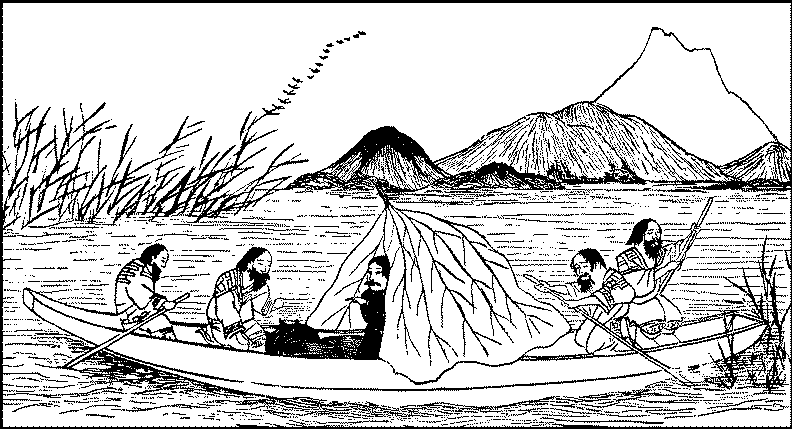 Small boats go by many names. Most are similar to a coracle, rounded frames of wood, covered with hide and then sealed, floating atop the water and best-suited to smaller waterways and lakes. They sometimes find use as transportation in wet areas, but mostly they are a craft for fisherman, frog hunters, and reed gatherers. Piloting these boats requires some care, as they essentially float atop the water.
Small boats go by many names. Most are similar to a coracle, rounded frames of wood, covered with hide and then sealed, floating atop the water and best-suited to smaller waterways and lakes. They sometimes find use as transportation in wet areas, but mostly they are a craft for fisherman, frog hunters, and reed gatherers. Piloting these boats requires some care, as they essentially float atop the water.Crew: 1
Significant Abilities: Agile 2W, Large 10, Navigate Streams and Marshes 5W, Unstable 10, Sturdy 13
Typical Names: Catboat, Fish Bucket, Lucky Skiff
Banka
The banka is a small canoe outrigger, similar in size to the kwang, its cousin, and common in the south. These boats carry lateen sails and have a sharp prow like the nose of a hunting fish. They are always highly decorated. Bankas have more in common with East Islander boat traditions than Kralori and are not popularCrew: 1 to 8, usually an even number
Significant Abilities: Agile 8W, Large 15, Sail Fast 10W, Shallow Draft 10W, Small Cargo Space 15, Stable 15, Sturdy 10
Typical Names:
Sanbaan
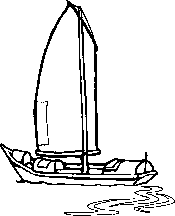 The sanbaan is a small, flat-bottomed craft, typically ten to fifteen feet long, much like a scow or punt. It has a flat bow and stern and is propelled by oars or single sail. Some have a small sheltered section of deck or even a small house. A rear paddle is the most common means of propulsion, but many sanbaans have a short mast and a traditional Kralori square sail. These sturdy sails can be adjusted to allow them to sail into the wind.
The sanbaan is a small, flat-bottomed craft, typically ten to fifteen feet long, much like a scow or punt. It has a flat bow and stern and is propelled by oars or single sail. Some have a small sheltered section of deck or even a small house. A rear paddle is the most common means of propulsion, but many sanbaans have a short mast and a traditional Kralori square sail. These sturdy sails can be adjusted to allow them to sail into the wind.The sanbaan is found throughout the waters of Kralorela and may be its most common watercraft. Sailors use it for fishing and transportation in all coastal areas and rivers.
Crew: 1 to 6 or more
Significant Abilities: Agile 13, Large 5W, Sturdy Rigging 5W, Sail Fast 2W, Shallow Draft 10W, Stable 15, Sturdy 3W
Typical Names:
Bwo
The Kralori barge is known as the bwo, and the Kralori have raised the barge to a high level, as evidenced by their ferries, paddle boats, and war barges. The basic barge, though, is a simple craft, flat-bottomed, high sides, and propelled by oars. They are usually between twenty and fifty feet in length and roughly half as wide.Crew: 6 to 20
Significant Abilities: Large 15W, Large Cargo Capacity 10W, Robust Rigging 10W, Stable 10W, Sturdy 10W, Travel up Estuaries 5W
Typical Names: Chi Ting Ferry #12, Scarlet Parrot, Uncle Hsing’s Baby
Dhow
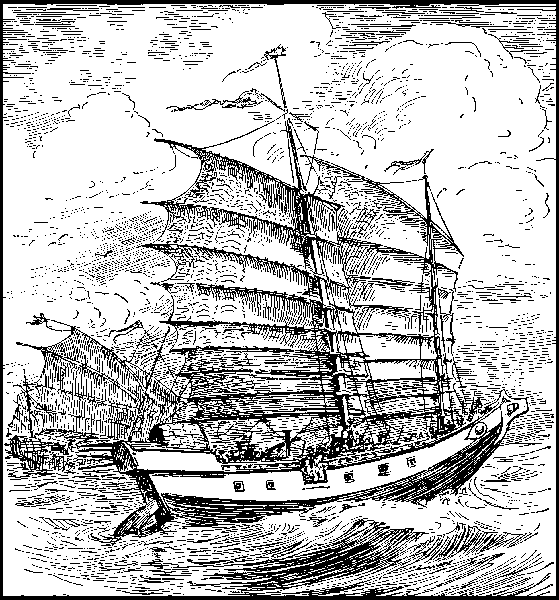 The Kralori and some East Islanders use dhows. They are best known for their hardiness, strong square sails, and long flags flown to placate the dragons in the sky. These vessels are the primary type of ship found in Kralori waters.
The Kralori and some East Islanders use dhows. They are best known for their hardiness, strong square sails, and long flags flown to placate the dragons in the sky. These vessels are the primary type of ship found in Kralori waters.The river dhow, also known as a chwan in the north, or a joong in the south, has a rounded stern and a high poop deck. Its bottom is flat and has no keel, though some use a retractable keel, leeboard, or large rudder to prevent sliding across the water in strong winds. The dhow has stern-mounted rudder, adjustable to the water’s depth and fenestrated, allowing easier control.
The dhow’s sails are made of bamboo slats or on rare occasions silk. They can be adjusted inward to the ship’s main axis, allowing these craft to sail into the wind. Each sail is composed of multiple battens, which add strength, each with its own line, giving greater control. As well, tears can’t spread farther than a batten, making the sails more resilient.
The hull of a dhow is divided into separate compartments, accessed separately from above. This reduces the chances of sinking by isolating any flooding of the boat to one section. Legends state that a son of Aptanace the Sage discovered this technique, inspired by the compartments of bamboo used in the first raft. Many dhows also have bilge pumps.
The large ocean-going dhow, known as tsows, can be over one hundred feet in length and have a single mast with a triangular or lateen sail. Dhows trade with Teshnos, the northern East Isles, and even as far as Kethaela. Long-distance tsows often carry Kralori compasses, whose needles always indicate the direction of the imperial capital.
Crew: 5 to about one hundred
Significant Abilities: Agile 18, Large 15W3, Large Cargo Hold 12W2, Robust Rigging 15W, Sail Fast 12W, Stable 20, Sturdy 8W, Travel up Estuaries 17
Typical Names: Emerald Cloud, Luminous Butterfly, Prosperous Bounty, Proud River Empress
Doolu
The doolu is a type of paddle wheel boat unique to Kralorela. They incorporate elements of the bwo and the dhow, having a shallow draft but a definite prow. Their most remarkable feature, however, are the propulsion wheels that line their sides or rise at their sterns. The simplest doolu has a single rear wheel or two on the side, driven by men, sometimes many men, at foot-treadles. Free men may work private ferries, but most receive their power from convicts or zombies. A few have wood and coal powered engines designed by dwarves.Depending on their design and the placement of their paddle wheels, doolu vary in appearance and function. Many also have sails in the traditional Kralori style. Most are used for transport of people, goods, or both. Some dragonboats, detailed below, use paddle wheel technology.
Crew: 6 to several hundred
Significant Abilities: Agile 13, Large 5W3, Large Cargo Hold 2W2, Powerful Engine 10W, Robust Rigging 15W, Sail Fast 18, Stable 20, Sturdy 8W, Travel up Estuaries 17
Typical Names: Admiral Wang’s Delight, Serpent of the Waves, Thousand League Traveler, Wheel of Water
Faang
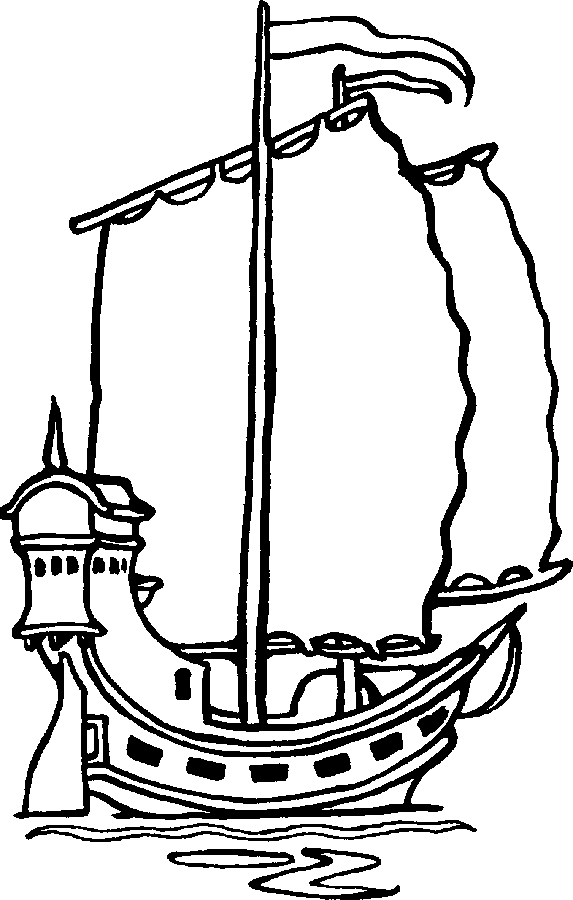 Faang is a term applied to a yacht or other pleasure vessel. This word applies just as well to the crafts of nobles as to the floating brothels of Chi Ting. Faang describes the opulence of a boat, not its design, and faang include bwo, dhow, and doolu craft. Even a few luxury sanbaans count as faangs.
Faang is a term applied to a yacht or other pleasure vessel. This word applies just as well to the crafts of nobles as to the floating brothels of Chi Ting. Faang describes the opulence of a boat, not its design, and faang include bwo, dhow, and doolu craft. Even a few luxury sanbaans count as faangs.
Pangh Aow Jow - Dragonboat
These are the great imperial ships of the Kralori. The common terms includes both the navy’s mightiest war barges (pangh jan bwo) and the vast, luxurious vessels of the nobility (pangh faang). Examples of each are provided below.
Imperial Battle Barge
These vessels cruise the waters around Kralorela in great fleets, equaling a small city in their activity and logistics. In the greatest battles, they can join together as a vast surface large enough for massed forces and even cavalry charges. Crew: 400, plus 500 marines Significant Abilities: Ballistae & Fire Slingers 10W3, Cavalry 15W2, Dragon Waters 10W3, Large 15W4, Large Cargo Hold 10W2, Marines 15W2, Ram 15W3, Robust Rigging 10W2, Sail Fast 10W, Stable 15W3, Sturdy 15W3 Typical Names: Iron Glory Lotus, Resolute Might of the Treasured Golden Commander, Shell of the Great Jade Turtle, Vibrant Exclamation of Imperial WillImperial Golden Dragon
This massive vessel is the emperor’s own yacht for excursions on the Suam Chow. He has not used it in more than a century, but it is kept ready for him at all times.Crew: 600
Significant Abilities: Agile 10W2, Dragonscale Hull 10W3, Fly 10W3, Glorious Golden Fire 10W3, Large 5W4, Opulent Palace 10W3, Robust Rigging 15W3, Sail Fast 10W2, Travel Underwater 10W3





